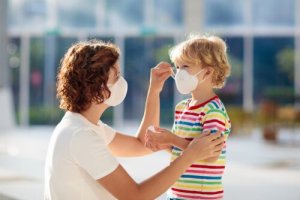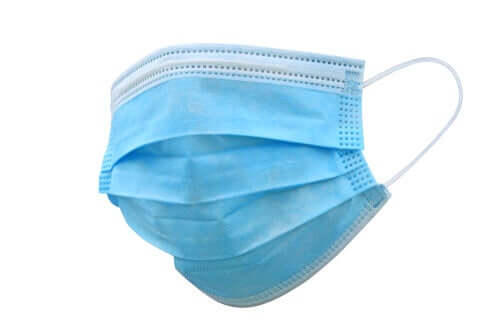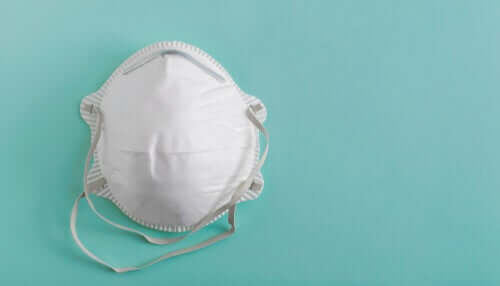Everything You Need to Know About Medical Masks

Medical masks are individual items of protective equipment that people can wear. They protect from exposure to pollutants through the respiratory tract. They are entirely made of a filtering material, and have a clip or nasal adapter and rubber bands or fasteners.
However, some of them have exhalation valves. In fact, the valve makes breathing easier and prevents condensation. They are made for long periods of use.
Types of medical masks
There are two groups of medical masks:
Surgical masks
These masks protect other people. This is because they filter the particles when you breathe, preventing them from reaching the outside.
High-efficiency FFP masks
This type of mask protects the wearer. They filter the particles in the environment so the user doesn’t inhale them.
They come in different shapes depending on their design. Also, they can be conical, horizontal or vertical. In addition, depending on their efficiency, they can be class 1, 2 or 3. The type of class depends on how well they filter the pollutants in the environment.
- FFP1: 78% filtration efficiency, environmental concentrations up to 4 TLV- Threshold Limit Value.
- FFP2: 92% filtration efficiency, environmental concentrations up to 12 TLV.
- FFP3: 98% filtration efficiency, environmental concentrations up to 50 TLV.

You might be interested: How to Make Garlic Honey to Fight Respiratory Problems
How do I use medical masks?
The best mask depends on the risk factors. However, before and after using medical masks, make sure to wash your hands. Put on the mask before entering the contaminated area, and take it off outside. In addition, make sure it fits properly in order to get good protection.
Also, it’s important to change medical masks after using them, in case they get wet or damaged. It’s also a good idea to change the mask if you’re breathing a lot, since moisture builds up and it can’t filter well.
What type of medical masks should you use?
You should use surgical masks when changing activities or moving from one environment to another.
FFP2 masks should fit the surface of the face, completely covering the nose and mouth to protect the mucosa. Also, make sure to use them according to isolation measures and precautions for people with communicable diseases. FFP3 masks are for risk of exposure.
How to put on and take off your masks
It’s important that you know how to put masks on in order to protect yourself properly. However, it’s also important to know how to take them off. However, if you don’t do this well, you could get sick.
Putting on the mask
To put medical masks on correctly, you need to do it before entering a contaminated area. Follow these steps:
- Wash your hands and check the expiration date. There mustn’t be anything defective in the mask.
- You can now put on the mask. Make sure to think about the order of wearing protective gear if you’re going to use other protection. This is the order: gown, cap, leggings, mask, glasses and gloves.
- Fit the mask properly to protect yourself. If you wear glasses, you’ll have to take them off to put on and adjust your mask. After that you can put your glasses on again.

Also read: Prevent the Coronavirus When Shopping
How do I put medical masks on correctly?
- Hold the mask with both hands, leaving the nose clip at the top. Then, shape the clip by folding it carefully in the center, and open the mask by pulling on the bottom edge.
- Then, put the mask under your chin and pass the two bands over your head.
- Pass the lower band under your ears, and the upper band over the crown.
- Finally, mold the nose clip with both hands to fit the shape of your nose.
Take off your mask
To remove protective gear, there’s also an order: gloves, glasses, leggings, cap and gown. Outside the contaminated area, you take off your mask. Then, you need to make sure you put it in the appropriate container, and wash your hands.
Conclusion
There are different types of medical masks to protect us, filtering the harmful particles in the environment. Therefore, it’s important to choose the right one and put it on correctly. Not all masks are always useful, and some might even be counterproductive.
All cited sources were thoroughly reviewed by our team to ensure their quality, reliability, currency, and validity. The bibliography of this article was considered reliable and of academic or scientific accuracy.
- Li KKW, Joussen AM, Kwan JKC, Steel DHW. FFP3, FFP2, N95, surgical masks and respirators: what should we be wearing for ophthalmic surgery in the COVID-19 pandemic? Graefes Arch Clin Exp Ophthalmol. 2020 Aug;258(8):1587-1589.
- Neilson S. The surgical mask is a bad fit for risk reduction. CMAJ. 2016 Apr 11;188(8):606–7.
-
Use of Surgical Masks in the Operating Room: A Review of the Clinical Effectiveness and Guidelines [Internet]. Ottawa (ON): Canadian Agency for Drugs and Technologies in Health; 2013 Nov 19.
This text is provided for informational purposes only and does not replace consultation with a professional. If in doubt, consult your specialist.








